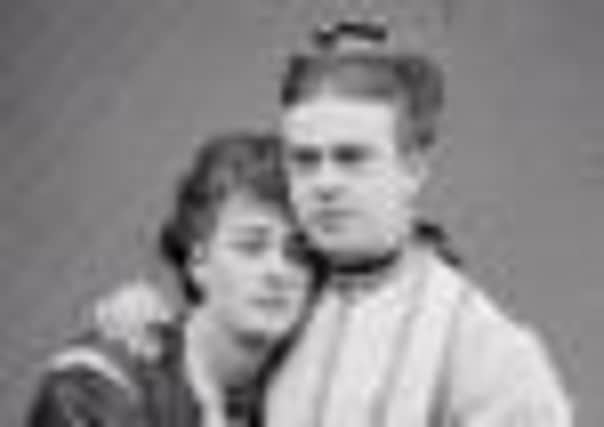Book review: Fanny And Stella: The Young Men Who Shocked Victorian England


Fanny And Stella: The Young Men Who Shocked Victorian England by Neil McKenna
Faber and Faber, £15.99
When they were taken to the police station and stripped of their finery they were revealed to be two young men.
Advertisement
Hide AdUnder police interrogation Miss Fanny Park and Miss Stella Boulton admitted to being Frederick William Park and Ernest Boulton, two young men who enjoyed dressing as women. The two were put on trial, a trial which soon became a public spectacle.
Boulton identified himself to police as the son of a stockbroker who lived with his father in Maida Vale, and Frederick Park was the son of a judge, who lodged in Berkeley Square. Neil McKenna’s book, centring on the subsequent trial of Fanny and Stella, uncovers a rich social history of the sexual underworld of Victorian London.
Along the way he details a vivid demi-monde of “He-She Women”, male prostitutes, sodomites, catamites and – in the more fevered imagination of the popular press – “votaries of the Hermaphrodite clique”.
For most members of the public, a degree of confusion, born of a lack of sophistication, surrounded the whole business. Cross-dressing male prostitutes mingled with female street walkers, often getting involved in vicious physical fights over territory. Celebrated transvestites were courted by peers of the realm.The physical details of how sexual congress could occur were more easily obscured in an era in which sex, even in marriage, was a source of confusion and anxiety.
McKenna is particularly good on the way in which those who chose to live their lives on the sexual edges could mingle with the “straight” world, becoming celebrities, becoming engaged, even taking the honorific title “Mrs”.
Along the way there are fascinating revelations. French male prostitutes in drag wore false breasts made from sheep’s lungs which were cut to shape and then pumped up to provide a convincing bosom. In one of this book’s stand-out anecdotes, a Parisian doctor records: “One of the prostitutes complained to me the other day, that a cat had eaten one of his breasts which he had left to cool down in his attic.”
Advertisement
Hide AdFanny and Stella were turned by the press into folk heroes or villains. Their trial, which has resonances with the trial of Oscar Wilde more than 20 years later, was a media event, attended by crowds of bystanders each day. They provoked ribald songs, poems, unprintable jokes and cartoons. The relatively unsophisticated way in which Fanny and Stella transformed themselves from male to female might make them appear more like panto dames that convincing women. But in an era with a less airbrushed or surgically enhanced sense of feminine beauty, they were dangerously ambiguous figures.
Stella, repeatedly commended by her contemporaries as radiantly beautiful, elegant and alluring, could, in the photograph in this book, pass for a woman today. Fanny looks like a prop forward in drag. But both had their admirers, and proposals of marriage.
Advertisement
Hide AdMcKenna’s book is a fascinating read, if written in a rather purple style. Here women swoon, disgraced employees leave under a cloud and compelling testimony leaves courtrooms spellbound. But as a slice of social history it is fascinating. «